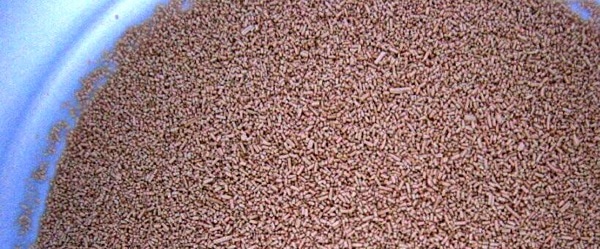An Overview of Yeast Two-Hybrid (Y2H) Screening

If you are cooking up a way to test if two proteins interact, you need a yeast two-hybrid (Y2H) screen in your recipe book. You don’t want your Y2H to turn out half-baked – so check out this guide to Y2H and we’ll help you make sure yours will rise to the occasion!
What is a Yeast Two-Hybrid Screen?
A yeast two-hybrid (Y2H) experiment detects the physical interactions of proteins through the downstream activation of a reporter gene. How exactly this transcription is measured depends on the reporter gene. But most commonly it is done by auxotrophic selection, i.e. the ability of the yeast to grow on nutrient-restricted medium.
The advantages of a Y2H screen include: 1) that it is relatively fast and easy way to screen for protein-protein interactions; 2) it requires little hands-on time and technical skill and; 3) it is also able to be scaled up by screening yeast libraries of tagged “prey” proteins against a single “bait”, allowing thousands of potential interactions to be screened rapidly.
How Does a Yeast Two-Hybrid Work?
The key to a Y2H screen is that most eukaryotic transcription factors are modular. The activating domain (the section of the protein that recruits the transcriptional machinery) and the binding domain (the section of the protein that directly binds DNA) of eukaryotic transcription factors are split into two fragments. And the transcription factor can still activate transcription when the fragments are just close together – not even directly connected.
You can take advantage of this modularity by tagging your two proteins-of-interest with different domains of a fragmented transcription factor. Then if these proteins-of-interest are in close proximity to one another they will bring their tagged DNA-binding and activation domains close enough to form a functional transcription unit. This functional unit can then bind a promoter element upstream of the reporter genes (e.g. histidine and adenine biosynthetic enzymes, allowing the yeast to grow on plates lacking these nutrients) to activate their transcription.
What is Required in a Yeast Two-Hybrid?
In order to do a Y2H experiment, you need:
Plasmids
You will need two plasmids:
- Prey Plasmid. This plasmid will encode for: 1) the activation domain of your transcription factor fused to one of your proteins-of-interest, called the “prey” and; 2) a selection marker, e.g. a leucine biosynthesis gene, which will allow the yeast to grow in medium lacking leucine.
- Bait Plasmid. This second plasmid will encode for: 1) the DNA-binding domain of a transcription factor fused to one of your proteins of interest, called the “bait” and; 2) a selection marker e.g. a tryptophan biosynthesis gene, allowing the yeast to grow in medium lacking tryptophan.
Yeast
You will, of course, need yeast in a Yeast Two-Hybrid experiment. But not just any yeast: genetically modified strains of yeast. For auxotrophic Y2H experiments, your yeast strain is usually deficient in parts of the pathways for leucine, tryptophan, histidine and adenine biosynthesis. Leucine and tryptophan are used as selection markers (much like antibiotic resistance in bacterial transformation experiments) to test for the successful transformation of your plasmid constructs into the yeast. Histidine and adenine genes are stably encoded in the modified yeast strain genome, but are under the control of a non-endogenous transcription factor that is only expressed when you have successful transformation of both plasmid constructs as well as physical interaction of your target proteins to form the functional transcription factor machinery.
Yeast Growth Media
You also need the correct media to grow and screen your yeast including:
- Complete growth medium containing leucine, tryptophan, histidine and adenine.
- Selection medium lacking either leucine or tryptophan (for selection of single transformants) or both (for selection of double transformants).
- Reporter medium lacking histidine or adenine, or both, for scoring the interaction between your target proteins based on the transcriptional activation of these genes by your fragmented transcription factor.
Limitations of Yeast Two-Hybrids
- There are high rates of false positives and false negatives in Y2H screens.
- Interaction must occur in the nucleus for the reporter gene to be activated.
- Protein folding, expression and post-translational modifications may not be the same in yeast as they are in humans, so their physical interactions may be different.
- Tagged proteins may not fold correctly and therefore may not bind their targets as normal in a Y2H.
- Y2H generate purely qualitative data based on relative scoring of yeast growth as compared to controls. Therefore, you cannot make assumptions about the strength of protein-protein interactions based on yeast growth. However modified versions of the Y2H assay do allow for quantification of protein-protein interactions.
Yeast Two-Hybrids with a Twist
Although still largely used to measure protein-protein interactors, Y2H variations have been developed to characterise other protein interactions. Check out these Y2H variations!
- Yeast one-hybrid: measures protein-DNA interactions.
- Yeast three-hybrid: measures protein-RNA interactions.
- Split ubiquitin yeast two-hybrid: measures protein-protein interactions between non-soluble proteins, such as membrane proteins.
- Yeast one-two-hybrid: measures simultaneous protein-DNA and protein-protein interactions
Have you used Y2H in your research? Let us know your tips for a successful Y2H in the comments!
2 Comments
Leave a Comment
You must be logged in to post a comment.
What one-hybrid systems are currently commercially available?
[…] Y3H system is based on the same principle as a yeast two-hybrid– namely, that the DNA binding domain and the transcription activation domain of a transcription […]